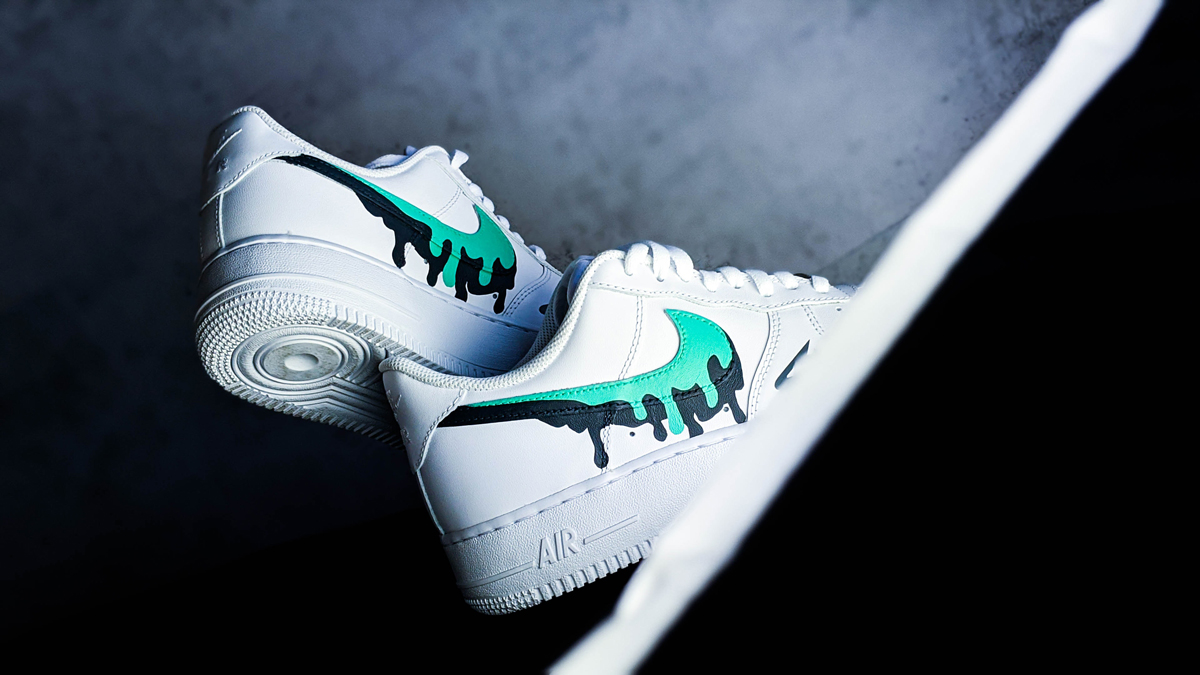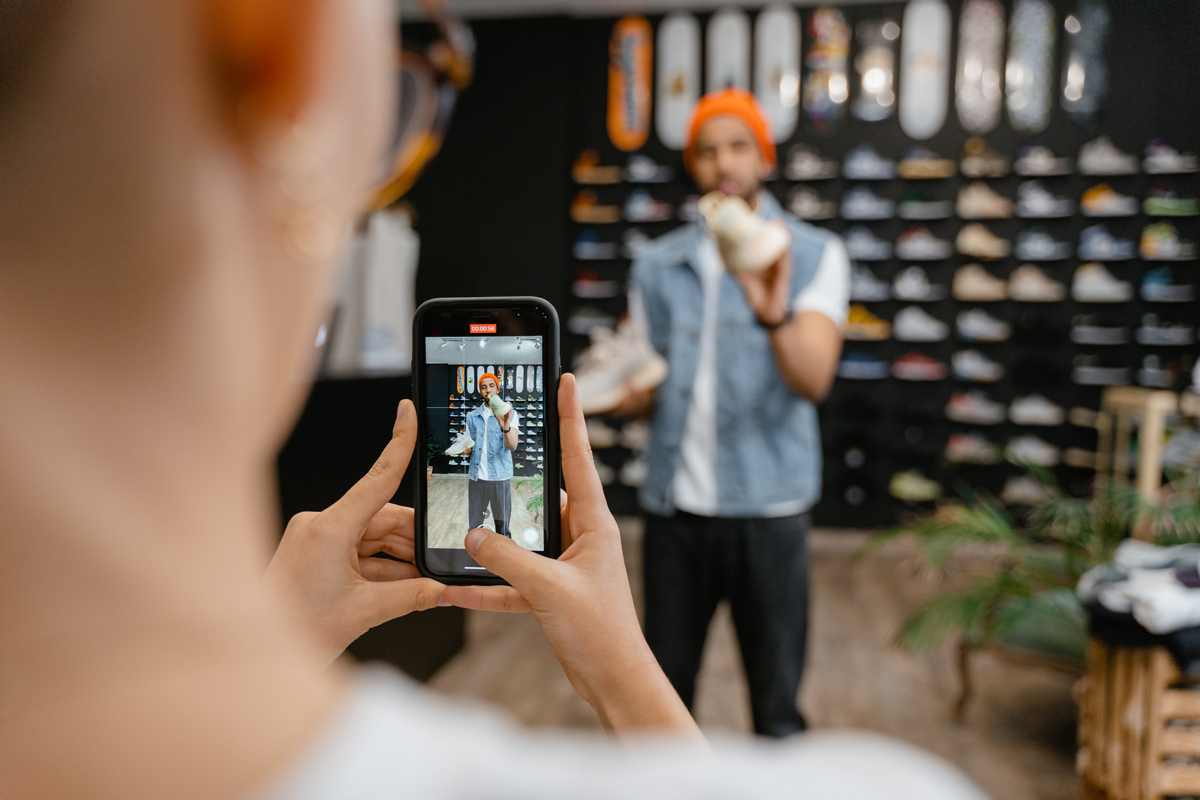Often referenced, but ever so elusive, sneaker culture is a standout when it comes to brand creativity and connecting with people. The styles, the history, the brand names, and the communities of fans, all play a key role in what makes the sneaker world continue to turn—which led us to wonder. What can sneaker culture teach us about consumer behavior and what can brands learn from the highs and lows of it all?
The Culture
Part of the beauty of sneakers lies in the art of expression.
For decades, sneaker culture has been embraced by pillars of the community, the fashion industry, pop-culture icons and more. It’s always been about more than just foot protection; rather a person’s sneakers are indicative of a period in history and the story they wish to tell.
Thinking back to the days of Run DMC pioneering hip-hop in their Adidas or Michael Jordan winning championships in his J’s, the sneakers are a vehicle to a position of greatness, which led to the massive pop-cultural impact of today. A recent iconic Spike Lee x Nike ad takes us on a trip down memory lane, highlighting iconic moments in sports the Nike brand helped build.
For some businesses, sneakers are the key to making a positive change in the community. Local to Columbus, Ohio, Sole Classics continues to push for a better community by cross-promoting charity and other local minority-owned businesses while running incentives that encourage students to excel academically and professionally. It’s just one example of how sneakers can be transformative outside of athletics.
Historically a Black consumer-driven market and creatively influenced by Black culture in all its glory, the sneaker community grew into a bridge of ethnic, social, and cultural collaboration. However, only 5% of sneaker businesses are operated and owned by Black owners, opening a discussion around redistributing a sneaker economy that was birthed and fueled by Black culture.

Welcome to the Hype Machine
The sneaker market is on pace to be a $120 billion industry by 2026, and sneaker resale alone is estimated to hit $6 billion by 2026. Brands aren’t the only ones driving the growth. Collaborations run rampant in the sneaker world, not only driving consumer preference and excitement but directly affecting the resale market.
Brands like Nike, Vans, Supreme, Adidas, and many more have successfully mastered the art of brand collaboration. Perhaps most famously, Nike’s ongoing collaboration with Michael Jordan has cemented the Jordan brand as truly iconic. The advertisements, the shoes, the historic moments, and the pop-cultural influence have helped the Jordan brand dominate the sneaker market since 1985. Even ESPN’s documentary, The Last Dance, directly impacted the sneaker market, leading Jordans (and their hype) to reach new levels.
Like the Jordan sub-brand, many sneakers are directly impacted by resellers and artificial intelligence. In a perfect world, everyone would have access to their favorite sneaker, but it’s not that simple. Hyped-up sneakers sell out instantly, in-store and online. Resellers using bots and AI and “insider trading” of sorts have unfairly kept these sneakers out of the hands of the public. The resold sneakers the public can access from popular sneaker drops are marked up at unbelievable rates.
Since 2020, resale culture has grown because of side-gig initiatives and has emerged into a new lifestyle for many entrepreneurs. This has led to a gentrification of the sneaker world, and it’s changed the accessibility of any major product. Many retailers and brands aren’t thrilled about resellers, as it takes away from the organic path to purchase and appreciation factor of sneakers, but it feeds the greater hype machine of sneakers and just how exclusive some drops can be.

Exclusivity Matters
Supply isn’t meeting consumer demand right now, and (most of) it is on purpose. Limited runs, sizes, styles, collaborations, and so much more merit the price hikes and stability of a sneakers’ value.
It’s not the sneakers themselves but rather the investment that gets the wheels turning. Much like a stock market, consumers are tracking detailed prices of their favorite kicks via sites like Stock X, Grailed, and more. Hyped sneakers (typically developed via collaborations) tend to appreciate but are heavily affected by real-world events.
Since the untimely passing of design icon Virgil Abloh, his Off-White sneaker collabs have sky-rocketed in price, while Ye’s recent ventures have led investors, resellers, and collectors to ditch the products altogether.
These days, people are wearing sneakers in new ways. In the spirit of dressing down, sneakers are not only dominating menswear, but they’ve also become a staple in formal fashion. Ted Lasso star Jason Sudeikis is one of the many adopting sneakers on the red carpet. GQ can’t get enough of the new shift, even developing style guides on how to properly rock your sneakers with a suit.
An Enduring Culture
“Sneakerheads” transcend demographics. They are simply people who use their shoes to tell a story. Whether it’s that innate desire to be “like Mike,” or another favorite athlete, artist, or influence, sneaker designers will continue to push us to find beauty in sneakers themselves and what they represent. Artist collaborations, iconic designs, and a spirit of individualism have taken sneaker culture to a new level, and there’s no walking back now.
Speaking of resale… it’s the season of giving. Check out our piece on affordability here.





